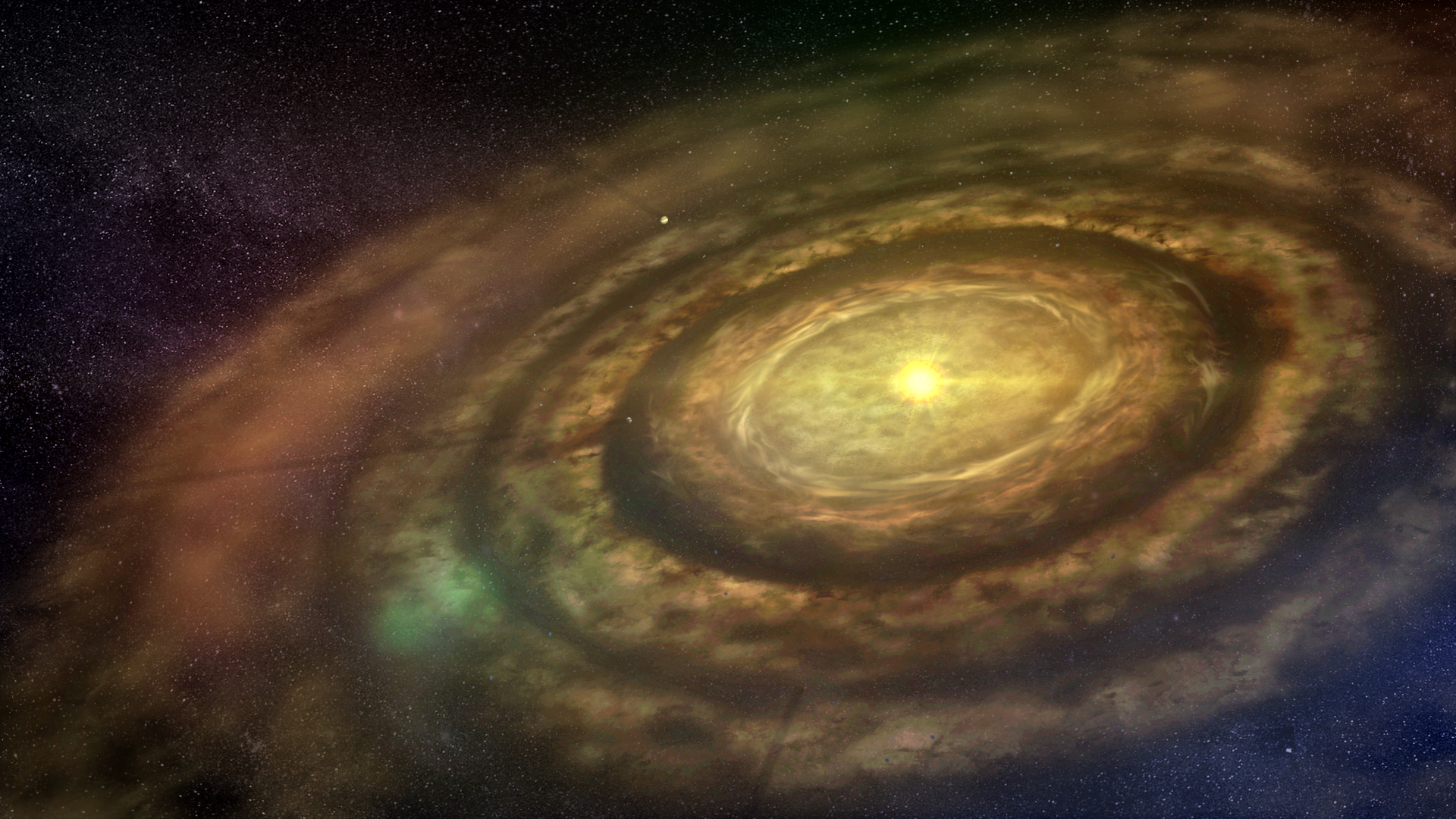The discovery of an extraordinary multi-planet system has demonstrated that so-called “hot Jupiter” planets may not be lonely giants after all. The findings could force scientists to revise their models of how planets form and how planetary systems evolve.
The system with this unexpected structure is centered around the K-type star WASP-132, located around 403 light-years away in the constellation of Lupus. Its inhabitants are the hot Jupiter (WASP-132b), a newly discovered inner super-Earth (WASP-132c) and an outer distant ice giant planet (WASP-132d).
The discovery was made by a team of researchers hailing from a range of institutes, including the University of Geneva (UNIGE), the National Center of Competence in Research (NCCR) Planets, the Universities of Bern (UNIBE) and Zurich (UZH).
The hot Jupiter WASP-132, with a mass just under half that of Jupiter, orbits its star in just over seven Earth days. The super-Earth, with around six times the mass of the Earth, orbits the star in just over 24 hours. The outer icy giant planet with five times the mass of Jupiter orbits the host star in five years.
Scientists have been studying this system since 2006 as part of the Wide-Angle Search for Planets (WASP) program. In 2021, NASA’s Transiting Exoplanet Survey Satellite (TESS) spotted the super-Earth, a fascinating development that suggested WASP-132 is a remarkable planetary system. Scientists now know the extraordinary structure of the WASP-132 system in better detail. The fact it has been studied for nearly two decades hasn’t prevented it from delivering surprises.
“This is a reminder that planetary systems are very diverse and that there are still many things related to planet formation and the early evolution of young systems that we don’t understand,” team member and University of Zurich astronomer Ravit Helled told Space.com.
How do hot Jupiters become cosmic loners?
Hot Jupiters are gas giants with masses often many times that of the Jupiter in our solar system. They also orbit incredibly close to their host star, which is weird because scientists think such large worlds would struggle to form close to a star in planet-birthing clouds of gas and dust called proto-planetary disks that whirl around stellar bodies.
Thus, scientists theorize that hot Jupiters don’t start out where we observe them today but rather “migrate” inwards toward their stars. They are thought to be “lonely” because the migration is theorized to lead to the accretion or ejection of any planets in an inner orbit.
“We think that hot Jupiters form at large radial distances from their star and then migrate inward to their current orbits,” Helled said. “This migration is expected to lead to either accretion [the gathering of material on to the hot Jupiter] or scattering of solid bodies or even protoplanets which ‘interrupts’ the formation of planets.”
Yet, the super-Earth in this system is closer to the central star than its hot Jupiter sibling, thus challenging this theory. Helled added that the fact there is an icy giant planet beyond the hot Jupiter in the WASP-132 system demonstrates that planets can still form near a hot Jupiter.

The fact that orbits of these worlds have not been destabilized by the inner migration of WASP-312b suggests there may be a more stable and dynamically ‘”cool” migration path along which hot Jupiters move inwards.
“It also provides important constraints on the formation timescale of the WASP-132 planets and the conditions of the protoplanetary disk that led to the formation of that system,” Helled said.
The team still doesn’t know what is so different about the WASP-132 system in comparison to other planetary systems with lonely hot Jupiters.
“This is what we need to explore next, both theoretically in terms of modeling the formation of such a system and also observationally, by determining the occurrence rate of multi-planetary systems that include a hot Jupiter,” Helled explained. “We need to work on models that can lead to the formation of such a system and understand how common such systems are.”
Investigations of WASP-132 will continue with scientists awaiting data from the star-mapping spacecraft Gaia, which has been studying this system since 2014. This could reveal more about its inhabitants, including a possible “failed star” brown dwarf at its very outskirts.
In the meantime, the existence of such a system could spark a revision of our understanding of hot Jupiters.
“I hope that this study will stimulate further investigations of the formation of hot Jupiters, the role of migration in the formation of planetary systems, and the expected diversity of planetary systems that include a hot Jupiter,” Helled said.
The team’s research was published on Wednesday (Jan. 15) in the journal Astronomy & Astrophysics.





Leave a Comment